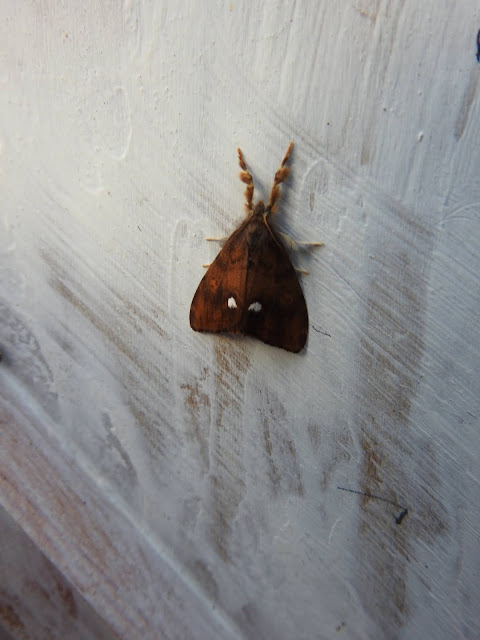I have been a subscriber to Atropos, a magazine for those interested in insects, especially migratory ones, since its first issue in 1995. This is despite the fact that for the first 22 years of my membership I only really knew anything about butterflies and dragonflies. Moths were just names. They meant nothing to me, although it was apparent that they meant a lot to Atropos. There are just so many species of moths and so few butterflies and dragonflies.
The reason I mention this is that Atropos introduced something called National Moth Night, a movable feast of moths set on different dates each year. Hundreds of moth-ers took part, and each year it grew and grew. The results were published annually in the magazine. I wished I could join in.
Finally I did. I bought a moth trap in 2018, and learnt about moths. At last I could take part. Unfortunately it has got so big that, as well as being rebranded as Moth Night, the results have stopped appearing in the magazine. To see them it is now necessary to access the Atropos website. I preferred seeing them in the magazine, but hey ho, the result of this year's efforts will eventually appear here: https://www.mothnight.info.
Last night was the first of three nights over which this year's event will run. My trap went out and I did pretty well. After clearing all the wasps I found a total of 89 moths of 22 species.
Excitingly these included two which were new to the garden, one of which is still scarce in Warwickshire having spread from southern England in recent years, while the other was a less than common migrant.
The scarce one is a pug (but not a boring one). The Cypress Pug is quite a looker for a pug, and also massive (pugwise) with a forewing of 11 millimetres. Phwoar !
 |
| Cypress Pug |
How rare is it? They were first established as a resident in Warwickshire in 2007, and ten years later fewer than ten were found each year. Since then they have got a bit more frequent with 16 in 2018, and 14 in 2019. So not mega rare, but still a pretty good find.
The migrant was a Dark Sword-grass. They turn up every year, but are still unusual enough that most records are documented. I have to admit that the 18 which turned up Warwickshire in 2019 included one I saw on the side of Selfridges in Birmingham, so last night's moth was new for the garden but not new for me.
 |
| Dark Sword-grass |
This particular example seems to be a female and is rather more worn than it might have been, but I suppose if its flown all the way from southern Europe it has every right to look a bit worse for wear.
One other migrant turned up last night; a Silver Y, and one other moth was new for the year; a spectacular male Vapourer.
 |
| Vapourer |
You've probably seen this moth without realising it. An orangey moth jinking its way across the countryside in broad daylight at Morton Bagot generally goes unidentified, but is almost certainly a male of this species sniffing out the pheromone trail of the flightless female.
My only previous garden record was in 2018.
The commonest moths were the usual suspects;
35 Large Yellow Underwings, 16 Agriphila geniculea, 10 Flounced Rustics, and six Vine's Rustics.
Part two will follow tomorrow. I can hardly wait.
No comments:
Post a Comment